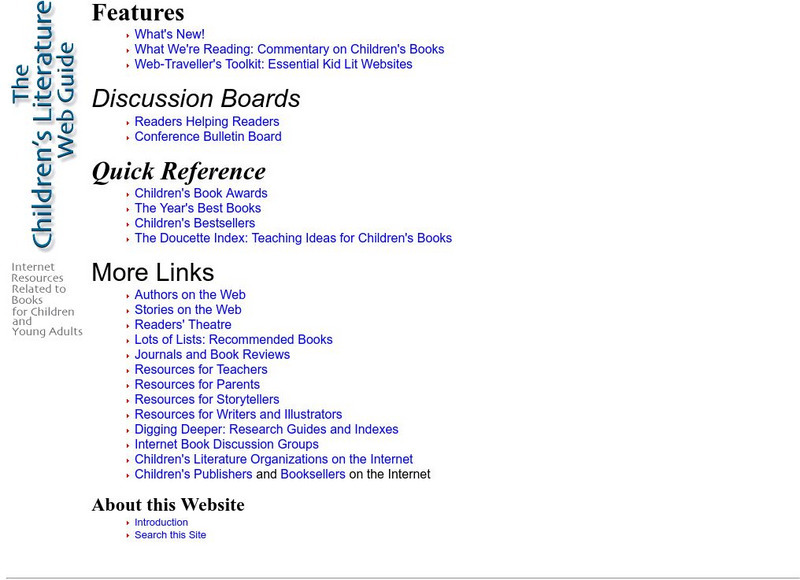Hi, what do you want to do?
Curated OER
Snack Smart Move More
Show your kids that staying healthy is the smart choice! They examine nutrition, healthy snacks, and the importance of staying active in a several-part lesson plan. There are different ideas for older and younger students here, and you...
Curated OER
THE TRAVELS OF BABAR: An Adventure in Scale:Conflict Resolution an Safety
Students research new techniques to solving conflicts without violence. Many new vocabulary words are uncovered within this lesson. They discuss Jean de Brunhoff's The Travels of Babar as an example of how a conflict can be resolved in a...
Curated OER
Writing Process
Introduce primary graders to the writing process. After reviewing the steps, they practice using the process by writing a book report. Before writing the draft, they complete a graphic organizer. The completed draft is reviewed by peers....
Curated OER
B is for Banana
Students practice and perform the song "B is for Banana" using their knowledge of basic rhythms in 4/4 and student-created rhythm accompaniment based on speech. This excellent lesson is provided by the MENC (National Association for...
NASA
The Science of the Sun
There's more to that glowing ball of light in sky than most children realize. From the overall structure of the solar system, to the changing of the seasons, these hands-on lessons open the eyes of young scientists to...
Curated OER
Hot Stuff
Very young scientists who are learning about solids, liquids, melting, and freezing will use this worksheet to identify things that would melt if put in a warm place. There are eight objects altogether, and learners place a check mark...
Curated OER
Name That Critter
Young learners classify five different animals into their proper category. The animals pictured are a pigeon, a lizard, a cat, a frog, and a goldfish. Pupils are also asked to tell why they know it's a certain kind of animal. An...
Curated OER
Ring-A-Ding-Ding!
What sound does metal make when you hit it? Kindergartners and first graders conduct an experiment about the properties of metal. First, they draw a line between metal items and descriptions of each. Next, they use a magnet to see which...
Curated OER
Can You See What I See?
Students gain an understanding of the methods used to explore the earth's surface. Students create a time line leading to the first satellite image of the Earth that includes the various methods utilized to observe the earth's surface.
Curated OER
Was it Fair for the Elephant's Child?
Young scholars use literature to explore ideas of justice. They discuss what makes something fair or unfair. They draw and explain cartoons that tell the story.
Curated OER
Getting Into Shapes: Identifying and Describing Two-Dimensional Shapes
Young scholars examine their classroom to find examples of various types of shapes. After identifying and describing the various shapes, they draw as many as they can on a piece of paper. They organize them into an image based on their...
Curated OER
Plants are yummy!
Is it a fruit or a vegetable? Youngsters place an F next to each fruit they see and a V next to the vegetables. Corn is tricky. It is a grass, so it's actually not a fruit or a vegetable, but a grain!
Curated OER
Shapes and Colors All Around
Students tour their school in a scavenger hunt to find primary colors and two and three-dimensional shapes. Students take digital pictures of the colors and shapes they find and create a class book of the pictures.
Curated OER
Farming Number 6
In this environment worksheet, students identify and explain the importance of water and farming. They identify the differences between food items and whether they are a fruit, vegetable, or animal. Students also respond to 5 yes/no...
Curated OER
Three Little Pigs - Venn Diagram
First graders orally compare and contrast "The Three Little Pigs" with "The True Story of the Three Little Pigs" by using a giant Venn diagram drawn by the teacher.
Curated OER
Phonics and Letter ID
Pupils identify at least 46 of the 54 upper and lower case letters of the alphabet by name, sound, or example of a word that letter starts.
Curated OER
Learning New Definitions
Students are introduced to new vocabulary. Then they are to guess what the words mean without using a dictionary. They organize words into a graphic organizer.
Curated OER
The Schoolyard Safari
Students engage in a lesson plan to find out more information about insects. They collect and observe different insects found on school property. They research the insects once they have been classified. Also a video is used to create a...
Curated OER
Water Conservation
In this environment worksheet, students look for the facts of how to conserve water and help the environment. They complete the activities as part of the unit.
Curated OER
Aborigine Dot Turtles
First graders create Aboriginal Dot Turtles using wax colors or crayons. The class discusses Aboriginal stories and art as a way to practice design. This lesson can be done in two 30-minute lesson segments.
Curated OER
What will you be for Halloween?
First graders construct a story sticking to the topic with 2-4 sentences.
Curated OER
Bug Hunt
Students strengthen observational skills by searching for insects in their home and classroom. In this observation lesson, students use magnifying glasses to classify what kinds of bugs were found. Students then create a bar graph to...
Reading Rockets
Reading Rockets: Building World Knowledge: Informational Text
Before, during, and after-reading ideas for introducing students to informational texts in the early-elementary grades in order to boost reading achievement through the upper-elementary grades.
University of Calgary
The Children's Literature Web Guide
This resource is a children's literature web guide.




























